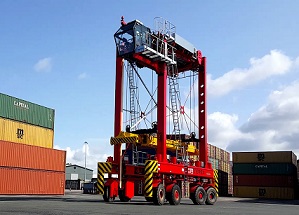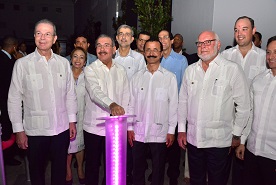Five of these machines have already been in use at the Peel Ports terminal in Liverpool since June this year, ten more will be delivered to the Liverpool port with commissioning scheduled for the fourth quarter of 2015. The straddle carriers are designed for handling 1-over-2 high-cube containers and incorporate particularly eco-friendly diesel engines, which meet the requirements of the EU Stage IV (EPA Tier 4 final) emission class. The machines also feature the new Vetrocab, which offers drivers an excellent all round view for safe, efficient and ergonomic operation.
With facilities in Liverpool, Glasgow, Manchester, Dublin, Sheerness and Heysham, handling a diverse range of cargo, including containers, dry bulk, liquid bulk, forestry products, automotive, RoRo, as well as passenger traffic, Peel Ports is one of the largest port terminal operators in the British Isles. Headquartered in Liverpool, it handles 70 million tonnes of cargo per year. The order marks the latest chapter in a longstanding relationship between Peel Ports and TPS, which has seen 60 straddle carriers delivered over the past 15 years.
David Huck, Port Director Peel Ports Liverpool, states: “We value the professionalism and passion of the TPS team and were impressed with the conceptual design and product innovation, demonstrated by these straddle carriers. The features incorporated within these machines, together with the high standards of after sales support provided by the TPS UK service team, will help to increase our productivity further.”
Alex Stogianidis, Director United Kingdom Terex Port Solutions, sees the order as the result of the company’s customer focused approach: “We are committed to total customer satisfaction and, to this end, we work closely with our customers during all phases of our projects. It is a policy, which is appreciated by Peel Ports and has been rewarded by continued brand loyalty from this valued and important customer.”



